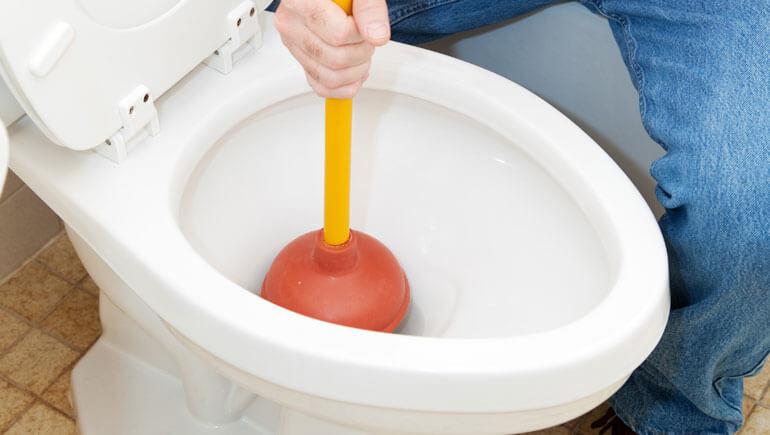Effective Plungers and Drain Cleaners: Crucial Advice
Schedule And PricingHow do you really feel in regards to How To Use Your Toilet Plunger Correctly in 5 Easy Steps?

Intro
Appropriate maintenance of house drains pipes is important for protecting against obstructions and making sure smooth water circulation. One of the key tools in every property owner's toolkit is the bettor, together with various drainpipe cleaners developed to take on persistent obstructions efficiently. This post discovers just how to make use of plungers and drainpipe cleansers successfully to maintain your drains moving easily.
Area 1: Understanding Plungers
Kinds of Plungers
There are a number of types of plungers available, each made for various kinds of drains and obstructs. One of the most typical types consist of cup plungers, flange bettors, and accordion plungers.
Just How Plungers Job
Plungers work with the principle of creating stress and suction to dislodge obstructions. When correctly used over a drain, they develop a vacuum that can take out debris or separate obstructions.
Choosing the Right Bettor
Choosing the best plunger relies on the kind of drain and the nature of the blockage. Mug plungers are optimal for sinks and bathtubs, while flange plungers are much better suited for bathrooms because of their layout.
Typical Mistakes with Plungers
Avoiding these errors ensures efficient plunging: improper seal around the drain, not enough force, and not clearing bordering particles.
Section 2: Utilizing Plungers Properly
Preparation
Before plunging, make sure the bettor covers the drainpipe completely and forms a tight seal. Clear any type of noticeable particles around the drainpipe opening.
Strategy
Beginning with mild diving motions to build suction. Increase pressure gradually, using a steady rhythm. Repeat as necessary up until the drainpipe gets rid of.
Troubleshooting Tips
If plunging doesn't function, try changing the seal, using oil jelly for a far better seal, or using a different kind of bettor.
Area 3: Recognizing Drainpipe Cleaners
Kinds Of Drain Cleansers
Drain cleaners can be chemical or enzymatic. Chemical cleansers make use of solid chemicals to liquify blockages, while enzymatic cleansers make use of all-natural enzymes to break down organic matter.
Exactly How Drainpipe Cleansers Job
Chemical cleaners react with blockages to dissolve them, while chemical cleansers break down organic materials like hair and grease without hurting pipelines.
Security Factors to consider
Constantly use handwear covers and eye security when making use of chemical drain cleaners. Make sure adequate ventilation and follow producer instructions carefully.
Eco-Friendly Alternatives
Consider utilizing vinegar and cooking soft drink or enzyme-based cleaners for eco-friendly choices that are safer for pipelines and the setting.
Section 4: Making Use Of Drain Cleaning Company Successfully
Application Techniques
Put chemical cleaners straight right into the drain opening. Permit them to work for the suggested time prior to flushing with warm water. Chemical cleaners ought to rest overnight.
Safety measures
Stay clear of blending different kinds of cleansers, as this can generate toxic fumes. Never utilize chemical cleansers in conjunction with a plunger, as splashing can occur.
Managing Persistent Obstructions
For relentless clogs, take into consideration making use of a pipes snake or calling an expert plumber to avoid damages to pipelines.
Conclusion
In conclusion, understanding just how to make use of bettors and drainpipe cleansers successfully is necessary for preserving healthy plumbing systems. By choosing the right devices and methods, homeowners can take on small clogs and protect against significant plumbing issues down the line.
How To Properly Use A Plumbing Snake To Clear Drains
When any drain clogs in our home arise, we tend to gravitate toward the plunger and little else. In cases where the plunger and its vacuum-created pressure are not able to clear clogs, many immediately move to harmful chemicals or simply call their plumber to fix the issue.
we’re happy to help with all drain cleaning needs and concerns. This includes informing you on a few other home remedies you may have at your disposal for minor to moderate clogs, one of which is the use of a plumbing snake. Many people have never used one of these before – let’s go over the steps to take when your drain clogs and you have a plumbing snake available.
Attempt Plunger Use
The first step here, as we noted above, should indeed be to grab your plunger when you notice a drain clog and attempt to resolve it this way. If you’re unsure how to use a particular type of plunger, our plumbers can answer any questions you have. If this doesn’t do the trick, however, you move on to the snake.
Locate And Prepare Snake
A plumbing snake is a metal or plastic device that’s generally about a quarter of an inch thick. It’s design with significant extensions, meant to reach down into your clogged drain and push the clog out. Snakes also contain drain augers that will latch onto and push stubborn blockages.
If your plunger doesn’t clear a clog, locate your snake and bring it to the drain in question. We also recommend keeping a bucket nearby to collect the clog once you pull it out, plus we’d advise wearing goggles and possibly protective gloves.
Feed Snake
Once you’re ready to go, feed the snake slowly down the drain, using the crank device it comes with to keep it moving until it finds the clog. Once this happens, much of the clog will be latched onto the coil so you can pull it out, while the rest will simply break up and flow downward.
Detach Debris
Remove the snake slowly from the drain, and once you’ve done so, pick off any debris that’s stuck to the coil. This is another area where wearing gloves is a must.
Flush Drain
Finally, take a few minutes to ensure the snake has done its job correctly. If you’ve been using it on a toilet, flush the toilet a couple times and make sure everything flows well. If you’ve used it on a different drain, flush it with some room temperature water.
https://www.mybuddytheplumber.com/blog/how-to-properly-use-a-plumbing-snake-to-clear-drains/

Application Techniques
Put chemical cleaners straight right into the drain opening. Permit them to work for the suggested time prior to flushing with warm water. Chemical cleaners ought to rest overnight.
Safety measures
Stay clear of blending different kinds of cleansers, as this can generate toxic fumes. Never utilize chemical cleansers in conjunction with a plunger, as splashing can occur.
Managing Persistent Obstructions
For relentless clogs, take into consideration making use of a pipes snake or calling an expert plumber to avoid damages to pipelines.
Conclusion
In conclusion, understanding just how to make use of bettors and drainpipe cleansers successfully is necessary for preserving healthy plumbing systems. By choosing the right devices and methods, homeowners can take on small clogs and protect against significant plumbing issues down the line.
How To Properly Use A Plumbing Snake To Clear Drains
When any drain clogs in our home arise, we tend to gravitate toward the plunger and little else. In cases where the plunger and its vacuum-created pressure are not able to clear clogs, many immediately move to harmful chemicals or simply call their plumber to fix the issue.
we’re happy to help with all drain cleaning needs and concerns. This includes informing you on a few other home remedies you may have at your disposal for minor to moderate clogs, one of which is the use of a plumbing snake. Many people have never used one of these before – let’s go over the steps to take when your drain clogs and you have a plumbing snake available.
Attempt Plunger Use
The first step here, as we noted above, should indeed be to grab your plunger when you notice a drain clog and attempt to resolve it this way. If you’re unsure how to use a particular type of plunger, our plumbers can answer any questions you have. If this doesn’t do the trick, however, you move on to the snake.
Locate And Prepare Snake
A plumbing snake is a metal or plastic device that’s generally about a quarter of an inch thick. It’s design with significant extensions, meant to reach down into your clogged drain and push the clog out. Snakes also contain drain augers that will latch onto and push stubborn blockages.
If your plunger doesn’t clear a clog, locate your snake and bring it to the drain in question. We also recommend keeping a bucket nearby to collect the clog once you pull it out, plus we’d advise wearing goggles and possibly protective gloves.
Feed Snake
Once you’re ready to go, feed the snake slowly down the drain, using the crank device it comes with to keep it moving until it finds the clog. Once this happens, much of the clog will be latched onto the coil so you can pull it out, while the rest will simply break up and flow downward.
Detach Debris
Remove the snake slowly from the drain, and once you’ve done so, pick off any debris that’s stuck to the coil. This is another area where wearing gloves is a must.
Flush Drain
Finally, take a few minutes to ensure the snake has done its job correctly. If you’ve been using it on a toilet, flush the toilet a couple times and make sure everything flows well. If you’ve used it on a different drain, flush it with some room temperature water.
https://www.mybuddytheplumber.com/blog/how-to-properly-use-a-plumbing-snake-to-clear-drains/

We had been shown that report about How to Use a Plunger to Unclog a Toilet or Drain through a good friend on another site. Those who appreciated our blog post please remember to pass it around. Thank-you for taking the time to read it.
Call Today